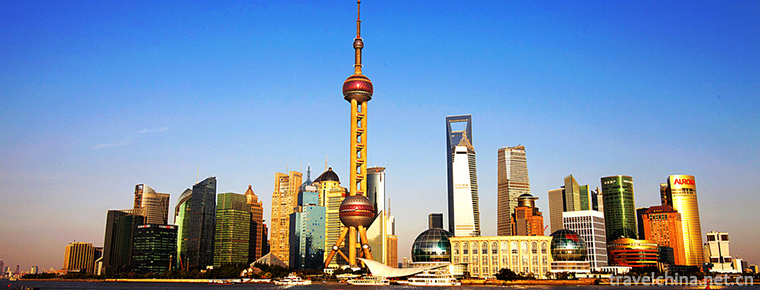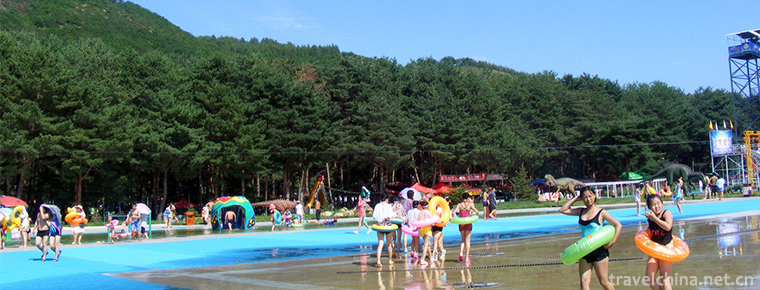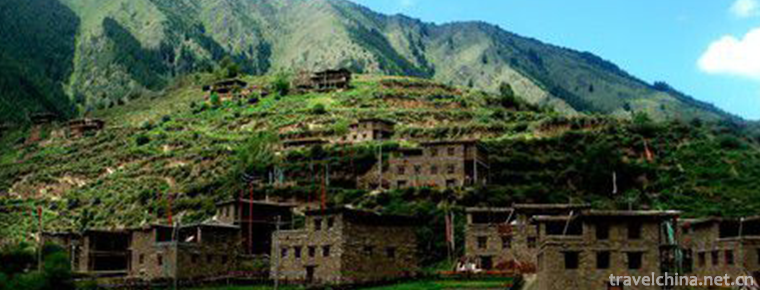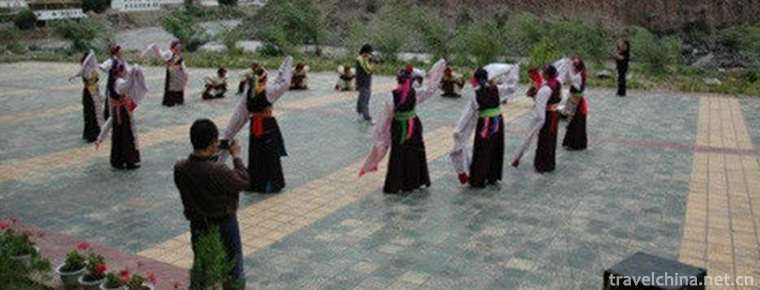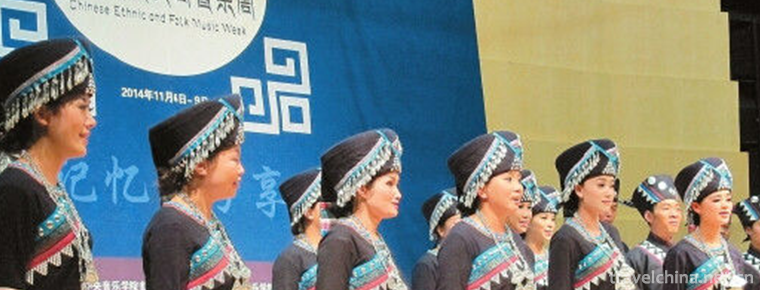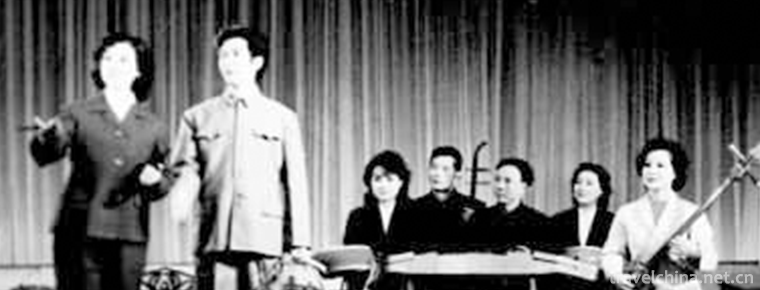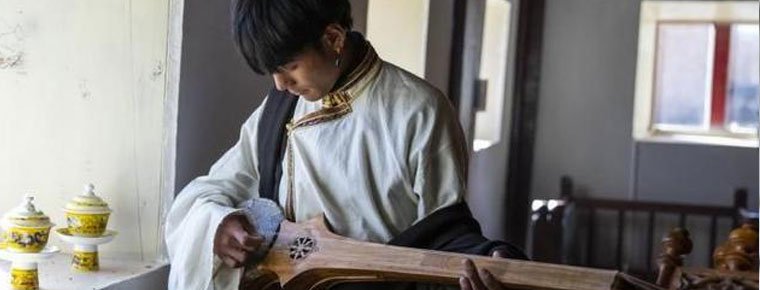Yidege Ink Making Skills
Yidege Ink Making Skills
Yidege is a local traditional handicraft in Beijing. It is well-known for producing ink. The products have bright ink, rich and light colors, fluent writing, moderate concentration, strong fragrance, easy to dry after writing, suitable for mounting, strong water resistance, never fading, small precipitation, non-exciting paper, four seasons applicable, and the characteristics of ancient ink.
brief introduction
Beijing Yidege is famous for its ink production. It has a production history of more than 100 years.
During the Tongzhi period of the Qing Dynasty, a scholar named Xie Songdai from Hunan Province came to Beijing to catch up with the exam and lost his name to Sun Shan. He deeply felt that it took too much time to study ink and delayed answering papers. He thought at that time, if a kind of ink can be made directly for writing, which saves time and effort, can't it be "a full skill for the world to use"? After many experiments, he finally chose lampblack and other accessories to make ink with the same effect as ink block. Once listed, it was welcomed by literati and ink-writers. In Tongzhi four years, Xie Songdai opened the first ink shop in No. 44, Liulichang, Beijing. The name of the shop is "Yidege", and he wrote the plaque himself and hung it in front of the door. This is the origin of "Yidege" ink.
raw material
With the growing reputation of Yidege and the expanding scale of production and operation, semicolons have been set up successively in Tianjin, Shanghai, Xi'an, Zhengzhou and other big cities, making the business more prosperous. "Yidege" ink is made of Sichuan high-color carbon black, bone glue, borneol, musk and phenol as raw materials and refined by traditional technology. Sichuan high-pigmented carbon black is deep and bright; bone glue has buoyancy, so that ink paper is not lost; borneol, musk are spices, fragrance overflowing; phenol is a preservative, so that long-term storage of ink is not rotten and odorless, can be used throughout the year.
Founder
Xie Songdai (1849-1898), a native of Hunan, was appointed to the Imperial College of the People's Republic of China. In addition to his studies, he devoted himself to the study of ancient books on ink. After years of research and development, he created ready-to-use ink. His father Xie Baozhang, Zeng Zuo Zongtang shogunate. His brother Xie Songliang is the author of "Four Treasures of Today's Study".
There is a close relationship between Chinese traditional calligraphy and ink. During the Wei and Jin Dynasties, ink balls made of lacquer smoke and pine smoke appeared, and then gradually developed into ink ingots.
Legend has it that Xie Songdai came to Beijing to catch up with the exam and fell behind. He deeply felt that it took too much time to study ink and delayed answering papers. He thought that it would save time and effort if an ink could be made directly for writing. After many experiments, he finally chose lampblack and other accessories to make ink comparable to Ink.
After the successful development of ink, Xie Songdai opened a workshop to make ink in the south of Beijing Normal City (self-produced and self-sold, business is very prosperous).
Xie Songdai wrote his own praise ink for couplets: "One skill is enough for the world to use, and many of them have been written by the ancients." The name of the shop "Yide Ge" is taken from the initials of this couplet. Xie Songdai wrote the plaque "Yidege" in person. The plaque is well preserved and still hangs on the East Street of Liulichang, Beijing.
Xie Songdai passed on the store to his disciple Xu Jiebin after his death. Xu Jiebin is a native of Shenxian County, Hebei Province. He has a flexible mind and is good at management. Under his supervision, the scale of production and operation of Yidege has been expanding. Xu Jiebin not only opened ink manufacturing factories, but also opened branches in big cities such as Tianjin, Shanghai, Xi'an and Zhengzhou, which made Yidege more famous and prosperous.
There are two kinds of ink produced by Yidege: oil fume and pine smoke. "Oil smoke" type of varieties are Yuntou Yan ink, blue smoke ink, bright ink, Tung smoke ink, etc., and "pine smoke" type of varieties are Agaosong tobacco, Wulao pine tobacco, Xiaosong tobacco and so on. The ink is of high quality and is widely welcomed by calligraphers and painters.
Writing and painting are often inseparable from printing mud. Babao printing mud produced by Yidege is well-known both at home and abroad. It not only uses high-quality cinnabar, natural ruby, coral, pearl and other precious materials, but also uses castor oil for one hundred years to make the mud. Its characteristics are pure color, clear seal, not afraid of sunshine, not afraid of roasting, not afraid of water immersion, long-lasting non-drying, fragrance and fragrance.
After nearly a hundred years of storms, in 1956, "Yidege" realized public-private partnership and set up a Dege ink factory. In 2004, Yidege Ink Factory was restructured as "Beijing Yidege Ink Industry Co., Ltd." In 2006, it was awarded the title of "China Old Brand" by the Ministry of Commerce.
Nowadays, "Yidege" owns Dege Ink Store and Four Treasures Store in Yiyuan Building. It not only sells ink, printing mud, printing desk, ink ingot and other products, but also manages brushes, inkstones, paper, calligraphy and painting, antiques and so on.
"Yidege" mainly produces Chinese ink and Yidege ink. Ink has a unique formula and production process, and its practical value, historical and cultural value and scientific value are extremely high. Qigong, a famous Chinese calligrapher, once inscribed "Yidege":
Inkstone pond rotates thousands of mills, and eventually spends a lot on bowls.
Ink made from a pavilion, who does not praise the first book.
Evolution
Beijing Yidege was founded in Tongzhi four years (1865) of the Qing Dynasty. It is famous for its ink, and its products are all over the land of Shenzhou and overseas. Yidege is located at 25 Nanxinhua Street, Xuanwu District, Liulichang Ancient Culture Street, Beijing. Xie Songdai, the founder, went to Beijing to study in Guozijian from his hometown of Xiangxiang, Hunan, where he was awarded seven literary works. Because of the inconvenience of ink research, after "repeated trial and error, repeated understanding" finally developed ink comparable to ink ingots, store sales received praise from users, and personally handwritten "Yidege" plaque, shop name is based on couplets "one skill for the world to use", "many methods from ancient books" crown. Before liberation, it opened branches in Tianjin and Zhengzhou, and franchised outlets in Shanghai and Xi'an.
Established in 1865, Yidege has a history of 148 years. In 2004, the company was restructured into Beijing Yidege Ink Co., Ltd. In 2006, it was awarded "China Old Brand" Enterprise by the Ministry of Commerce; Yidege Brand Trademark was awarded Beijing Famous Trademark for more than ten years; Yidege Company was awarded the National Advanced Enterprise of Quality and Benefit of Light Industry by China Light Industry Federation from 2002 to 2004, and won the National Special Award for Quality and Benefit of Light Industry; and in 2005, it was awarded the National Prize for Quality and Benefit of Light Industry of China The Federation of Industries has been awarded the National Excellent Performance Advanced Enterprise and "Yidege Ink Store" has been awarded the Beijing Excellent Characteristic Store. In 2006, it was awarded "Xuanwu Civilization Unit". "Yidege Ink Making Skills" has been awarded the list of Beijing intangible cultural heritage projects, and listed as a national intangible cultural heritage project recommended by experts. "Beijing Ink Block" and "Babao Yinmu" were census and registered as intangible cultural heritage projects in Xuanwu District. "Yidege Brand Ink", "China Brand Ink" and "Special Eight Treasures Ink Mud" have been confirmed and approved as state secret technology projects by the State Science and Technology Commission and the State Secret Bureau.
In 2005, it was filmed and broadcast on Beijing TV.
In 2004, through restructuring, the company established Beijing Yidege Ink Industry Co., Ltd. Old enterprises have rejuvenated the Spring Festival by establishing and improving management systems, scientific research, inspection institutions and new product research and development departments; establishing production bases in the suburbs of Beijing; at the same time, setting up a strong sales network throughout the country with products all over the country; and also selling to Japan, Singapore, Malaysia and other countries and regions. The market share of high-grade calligraphy and painting ink in China is 76%. In 2003, through excavating the historical data of enterprises, we developed the "Yuntouyan" brand of fine ink, which has a strong blackness and contains the light of purple jade. It is really a treasure of painting and calligraphy supplies. Just at the 140th anniversary of Yidege, the grand launch of "Chinese painting and calligraphy liquid" commonly known as "white ink" filled the gap of Chinese painting pigments and provided excellent works of Chinese painting blank and white character rubbings for the majority of calligraphers and painters. The company has set up "Yidege Ink Store" and "Four Treasures Store in Yiyuan Building" to sell ink, printing mud, printing tables, ink ingots and other products produced by the company. It also manages Chinese calligraphy and painting, antiques, four treasures in the study, handicraft and mounting of calligraphy and painting.
Product characteristics
Bright ink, strong water resistance, fluent writing, easy to dry after writing, non-fading paper, suitable for rubbing, moderate concentration, strong fragrance, suitable for four seasons. Ink is divided into five colors: thick, light, dry, wet and black. Or: coke, thick, heavy, light and light. Since its inception, ink has always maintained its unique advantages, and its reputation has become higher and higher. In the current reform and market changes, the enterprise not only manages the products of the factory, the four treasures of the study, handicraft products and so on, but also establishes the market department of Yiyuan Loumen, which restores the old name of Yidege Ink Store in the original history and place of Dongliulichang. It is striding forward to the international market with market demand as the guide and domestic market as the main body.
origin
Xie Songdai, the founder of Yidege Kaishan, is a native of Hunan Province. Xie Songdai's grandfather, Xie Xingzong, was a scholar of the Daoguangrenwu Section in the Qing Dynasty. He had successively worked in Xiaoshan, Shaoyun, Yiwu and Jinhua counties in Zhejiang Province. Xie Songdai's father, Xie Baoluo, was a scholar in Shenke, Xianfeng Geng, Qing Dynasty. He was the head of the household department and later transferred to the foreign Lang. Xie Hubu had four sons, and Xie Songdai was the eldest son. According to Xie's genealogy, Xie Songdai was born on the fifth day of October in Daoguang 29 (1849) of the Qing Dynasty. In the ten years of Xianfeng in the Qing Dynasty (1860), 12-year-old Xie Songdai traveled from Hunan to Beijing and was later sent to Taixue, the highest institution of learning at that time, Guozijian. He once officially awarded Guozi's supervisory books and seven-character Wen Linlang, which is equivalent to the copywriting work in the University Office nowadays. Xie Rongdai, a wise and learned cousin, and his Sichuan friends Liu Bowan, Rao Yiting and Peng Baochu have studied the method of making ink carefully since childhood. The ink-making process of "taking cigarettes first, studying cigarettes second, and glue third, removing residues fourth, closing bottles fifth, boxes sixth, musk deer seventh and article eighth" is summarized. In Guangxu Decade (1884), Xie Songdai wrote Notes on the Making of Ink in Southern Learning, and Xie Songliang, Xie Songdai's brother, wrote Four Scores of Today's Study in Guangxu 16th year (1890). Ink-making begins with smoking, and is finished by studying smoke, glue, dregs, bottles, boxes and musk deer. Multi-channel technology, cumbersome process, Xie Songdai looked in the eyes, want to be in the mind. He firmly believes that "block and inkstone, inkstone and box, box and juice, ancient and modern change is also its momentum". In today's words, it is from ink block to ink, which is the inevitable trend of development and change. From the Mohist Classics, Mopu, Mohist History, Mofa Collection of Song, Yuan and Ming Dynasties to Xie Songdai's Notes on Southern Learning and Making Ink and Four Generations of Modern Literature in the Late Qing Dynasty, these are all contributions of our predecessors to Chinese culture.
Xie Songdai read saints'books in Guozijian and suffered from the study of ink. He earnestly studied the theory of ink with his classmates and friends and explored the way of change. After "repeated trial and error, repeated misunderstanding, gradually know that the method of bottle collection and boxes without negligence of the shortcomings of deep and shallow", finally developed the ink, became the first ink production and production.
As an official, Xie Songdai inherited his father's career in a logical way, but he opened up a new path, from Yin Yin students'original interest in ink, and eventually became a rational choice to abandon learning and business. From the innovation of Ink and Ink products to the laying of professional production, from the confirmation of stores to the promotion of market products, he has become more skillful and comfortable in research, Book Writing and business. After the successful trial production of ink, Xie Songdai opened an ink shop in Tongzhi, Qing Dynasty, in 1865. In front of the ink shop, a couplet of tibetan-headed couplets was written: "One skill is enough for the world to use, and many ancient books can be obtained", which shows the owner's pride in original ink and his self-humility of forgetting his predecessors. Located in the north-central part of Dongliulichang, the ink shop has a two-storey small building with a veranda in front, a northeast garden alley in the East and a Pisces alley in the west. The two alleys do not connect with other shops. The two alleys are like a carriage pole carrying an ink shop. They have the meaning of "Pavilion" carrying the literary garden, and have the style of writing and ink commerce. Xie Songdai took the couplet conjunction and called the store Yidege to express his feelings. Located in Yidege of Beijing Liulichang, nobles and scholars all care about it. The eminent celebrities and scholars forget to return and become a must-see of Liulichang for a while.
In the fourteenth year of Guangxu in the Qing Dynasty (1888), Xie Songdai personally inscribed the plaque "Yidege" high hanging shop hall. Xie Songdai, a Confucian scholar of Taixue, shows his profound calligraphic skills on this plaque. Its words are solemn but not deliberate, beautiful and simple, especially the writing of "Ge" has its own ingenuity. A "Ge" character contains three types of calligraphy: Xing, Cao and Kai. The deletion of the word "Men" is simple and unadorned, and the combination of lines and drafts of the words "Ge" is a new idea. The plaque of "Yidege" in the golden characters on the black background not only shows the refined style of the owner of the workshop, but also implies Xie Songdai's painstaking intention to seek gold in Moli.
First, they don't worship Buddha, second, they don't worship God of Wealth. Every year, festival or when they receive apprentices to worship teachers, they pay homage to incense and honour. First, they worship the Holy Mohist and then worship the wardrobe. Su Dongpo, a writer and painter of the Northern Song Dynasty, was the first of the three Mohist saints in Yidege. According to the Song Dynasty Zhao Yanwei's "Yunlu Manjuan" quoted Su Dongpo's poem, "The window picks up light coal, the Buddhist tent sweeps the surplus, diligently spends thousands of nights, collects this inch of gold." That is to say, sweeping lamp smoke to make ink. Xie Songdai said that he got the method of smoking from him. The other was Zhao Jiyi, a famous ink-making writer in the Song Dynasty and the author of Mojing. Xie Songdai said that he was inspired by Hejiao. The third is Shen Jisun of the Ming Dynasty, who compiled the Collection of Mohist Art, the first ink-making craft book in history. This Book preserves 21 illustrations of ancient Chinese ink. Xie Songdai calls this book "an unprecedented book of Mohist writers, which gathers great achievements of Mohist writers". Xie Rongdai's contribution is to make the first ink factory in front of and behind the Liulichang Cultural Street, which is a cultural gathering place.
Xu Jiebin, disciple of Xie Songdaimen, is a member of Ren's family in Shenxian County, Hebei Province. He has a flexible mind and a good management. He has set up an ink manufacturer (now located at No. 25 Xinhua Street, Nanjie, Xuanwu District, Beijing) to expand production. He continues to use the ancient manual method to make ink. He has opened branches in Tianjin and Zhengzhou, where the literati are cloudy. Hai and Xi'an jointly run franchised agency stores. There are two main types of ink produced: Yuntou Yan ink, Lanyan ink, Bright ink, Tongyan ink, Dadantong and Shuangtong ink, lampblack ink, etc. varieties include: A Jiao Song tobacco, Wulao Pine tobacco, Xiaosong tobacco and so on. Oil smoke ink is a good product for calligraphers and painters, is a good product for writing small letters and fine brushwork painting. Its formula proportion is adjusted according to seasonal climate to suit the climate change of four seasons.
Calligraphy and painting can not be separated from printing mud. Babao printing mud produced by Yidege is a product of historical tradition. There are not only rare and precious substances, but also castor oil which needs to be adjusted for a hundred years. After sunshine and natural freezing in winter, it is suitable for all seasons of the year. Its characteristics are: pure color, clear seal, no fear of sunshine, no fear of roasting, no fear of water immersion, no matter which country has Chinese painting and calligraphy. There are eight treasures of printing mud and ink in Dege, so this product is well-known both at home and abroad.
main products
(Brand Ink)
Yuntou Brilliant Ink (Intense Ink with Purple Light) has specifications of 100g, 250, 500g
Yidege ink (high consistency) specifications are 100g, 250, 500g
The specifications of Chinese ink (concentrated) are 100g, 250
The specifications of Beijing ink (sub-concentrated, common exercises) are 100g, 250, 500g, 1000g.
Yidege ink is a traditional product in history since it was opened in 1865. It is the first native product in desert of our country. Material and formula are composed of high-quality high-color carbon black, animal gum and high-grade perfume. It is manufactured by traditional craftsmanship.
Features: Bright ink, rich and light colors, fluent writing, moderate concentration, strong fragrance, easy to dry after writing, suitable for unmounting, water resistance, never fade, small precipitation, non-exciting paper, four seasons, ancient ink characteristics.
Mr. Li Kuchan, an old painter, praised the ink test: "Yidege ink concentration is suitable, ink degree is enough, no delay is not lacquer, used in painting and calligraphy is salty, comparable to the pine smoke of the past years." The Chinese brand ink, the Chinese brand ink, is the first unique historical and traditional famous brand product since 1865. Its features are: fluent writing, bright ink, easy to dry after writing, suitable for unmounting, strong water resistance, never fading, small precipitation, non-exciting paper, strong fragrance, four seasons applicable. It is a must for calligraphers and painters.
Mr. Wei Changqing, an old calligrapher, praised him for his ink test: "Chinese ink is well made, wielding at will and falling like smoke." Yuntou Yan ink top layer of smoke (i.e. carbon black), the lightest and finest, contains the light of purple jade, black and charming, from the colorful like clouds, Yuntou Yan hence named. It is said that the name "Yuntou Yan" means "Yan" and "Yan". Yuntou Yanji was founded in 1865. It was developed by Xie Songdai, the founder of Yidege, the originator of ink. At that time, it was deeply loved by literati and ink-writers. In the book Yuntou Yanji written by Bao Shuwei in Guangxu years, it was called "Sanju" and "Siyi". The product gradually disappeared due to natural and man-made disasters.
In recent years, when collecting and sorting out the historical materials of Yidege, our company is delighted with the information of "Yuntou Yan Ink". After repeated development and utilization of refined raw materials such as high-grade pigmented carbon black and unique traditional technology, Yuntou Brilliant Ink, a treasure of ink, is reproduced. The product features: dark, purple light. The ink is a refined masterpiece dedicated to the calligraphy and painting circles by Dege, and is the first choice for calligraphers and painters to create works of art.
evaluate
Yidege put the quality of products in the first place since the Qing Dynasty. Xu Jiebin, the first generation of descendants, has passed away. Zhang Yingqin, the old factory director of the second generation, has also retired gloriously. The current factory-level leaders are the third generation of successors. The third generation has transformed the old machinery and equipment, adopted scientific production technology and modern testing instruments, and constantly improved on the basis of stable product quality, in order to strive for excellence to require the whole factory staff to innovate. Mr. Qigong, a famous calligrapher, inscribed:
Inkstone pond rotates thousands of mills, and eventually spends a lot on bowls.
Ink made from a pavilion, who does not praise the first book.
Mr. Chen Shuliang, a famous calligrapher, praised Yidege ink for its pure color, moderate gelatinity, fluent sprinkling and precious value in ink.
Honors
Gold Prize of the Fifth Asia-Pacific International Trade Fair
Silver Award of the Second Beijing International Expo
Beijing Yidege Ink Co., Ltd. has been certified as "China's Old Brand"
Beijing intangible cultural heritage


-
The Oriental Pearl Radio & TV Tower
The Oriental Pearl Radio and Television Tower is one of the landmark cultural landscapes in Shanghai. It is located in Lujiazui, Pudong New Area, with a height of 468 meters.
Views: 607 Time 2018-12-05 -
Yilong Water Custom Park
Yilong Water Custom Park was built in 1996, covering an area of 100 hectares. It was solely operated by individuals and formally opened in June 1997..
Views: 359 Time 2018-12-22 -
Construction Techniques of Tibetan Diaolou
Gabu Tibetan ancient building complex is located on the second terrace on the north-east Bank of Mako River, 3 kilometers northeast of Lighthouse Township, Banma County.
Views: 262 Time 2019-04-05 -
Hakka ancient prose
As early as the late Ming Dynasty and early Qing Dynasty, Hakka ancient prose had been formed, mainly distributed in Gongjiang Town, Xinpi Township, Kuanta Township, Zishan Town, .
Views: 156 Time 2019-05-09 -
Mangkang Trichord Dance
Sanxian Dance originated in Quzika Township, Mangkang County, Changdu District. It has the unique charm of simplicity, elegance, melodiousness and ease, and is deeply loved by the masses. Passengers p.
Views: 210 Time 2019-05-22 -
Poop love song
In February 2006, a cultural census unexpectedly found "Poya Ge Shu" in Poya Village. Through expert research, 81 patterns in "Poya Ge Shu" have the character of words, and are one.
Views: 211 Time 2019-06-09 -
Sichuan ballad singing
Sichuan Qingyin, formerly known as Pipa and Yueqin, is one of the traditional operas in Sichuan Province. In the 1930s, Qingyin Song Concerts or Improvement Meetings were set up in Chengdu and Chongqi.
Views: 199 Time 2019-06-16 -
Ding Zhen heaven on earth with fire
This "paradise on earth" with fire Ding Zhen absorbed tens of millions of powder overnight, and the search volume increased by 620%.
Views: 66 Time 2020-12-07 -
Mianyang scenic spots
Mianyang City is a famous historical and cultural city in Sichuan Province, the main node of the dajiuzhai international tourism circle and the Three Kingdoms Shu Road culture international tourism line. It has a 5A level scenic area of "Beichuan Qiang city tourism area".
Views: 69 Time 2020-12-14 -
medical and health work
By the end of 2019, there are 2139 medical and health institutions with 19943 beds. At the end of the year, there were 14351 technical personnel in hospitals and health centers, including 4839 licensed doctors and 6767 registered nurses. The numbe.
Views: 345 Time 2020-12-18 -
Location of Yibin
Yibin City is located in the south of Sichuan Province, at the junction of Sichuan, Yunnan and Guizhou provinces, and the confluence zone of Jinsha River, Minjiang River and Yangtze River. It spans 27 ° 50 '- 29 ° 16' n and 103 ° 36 '- 105 ° 20' E. The cit.
Views: 362 Time 2020-12-18
